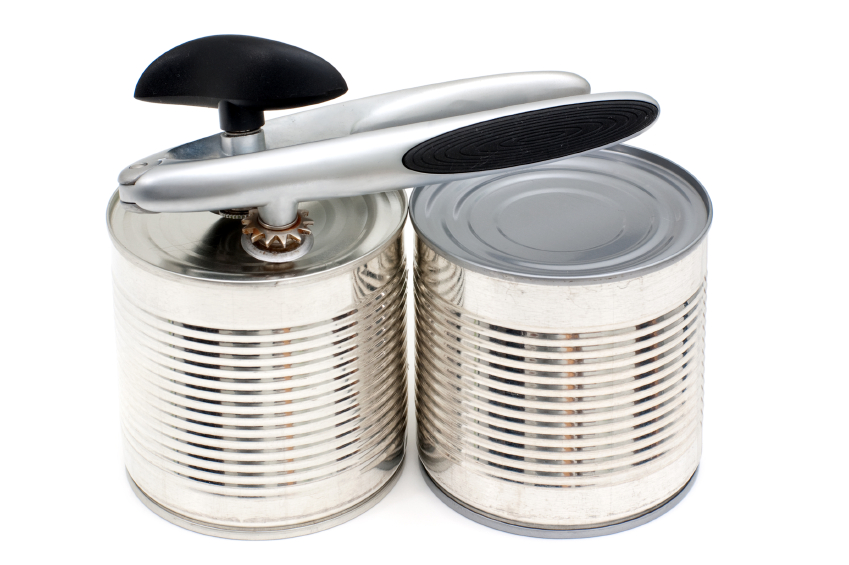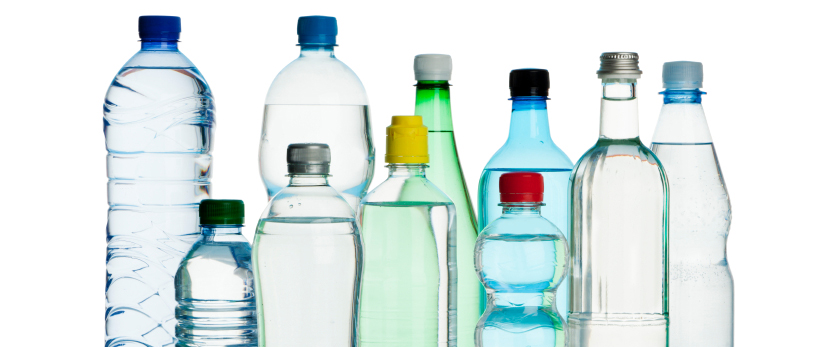Food
Consider the following things when putting together your emergency food supplies:
- Store at least a three-day supply of non-perishable food.
- Choose foods your family will eat.
- Remember any special dietary needs.
- Avoid foods that will make you thirsty.
- Choose salt-free crackers, whole grain cereals and canned foods with high liquid content.
Following a disaster, there may be power outages that could last for several days. Stock canned foods, dry mixes and other staples that do not require refrigeration, cooking, water or special preparation. Be sure to include a manual can opener and eating utensils.

The following items are suggested when selecting emergency food supplies. You may already have many of these on hand.
Choose foods your family will eat.
- Ready-to-eat canned meats, fruits and vegetables
- Protein or fruit bars
- Dry cereal or granola
- Peanut butter
- Dried fruit
- Nuts
- Crackers
- Canned juices
- Non-perishable pasteurized milk
- High energy foods
- Vitamins
- Food for infants
- Comfort/stress foods
Maintaining Your Kit
Just as important as putting your supplies together is maintaining them so they are safe to use when needed. Here are some tips to keep your supplies ready and in good condition:
- Keep canned food in a cool, dry place.
- Store boxed food in tightly closed plastic or metal containers to protect from pests and to extend its shelf life.
- Throw out any canned good that becomes swollen, dented or corroded.
- Use foods before they go bad and replace them with fresh supplies.
- Place new items at the back of the storage area and older ones in the front.
- Change stored food and water supplies every six months. Be sure to write the date you store it on all containers.
- Re-think your needs every year and update your kit as your family’s needs change.
Keep items in airtight plastic bags and put your entire disaster supplies kit in one or two easy-to-carry containers, such as an unused trashcan, camping backpack or duffel bag. .....
Water
Water is an essential element to survival and a necessary item in an emergency supplies kit. Following  a disaster, clean drinking water may not be available. Your regular water source could be cut-off or compromised through contamination. Prepare yourself by building a supply of water that will meet your family’s needs during an emergency.
a disaster, clean drinking water may not be available. Your regular water source could be cut-off or compromised through contamination. Prepare yourself by building a supply of water that will meet your family’s needs during an emergency.
How Much Water Do I Need?
You should store at least one gallon of water per person per day. A normally active person needs at least one gallon of water daily just for drinking however individual needs vary, depending on age, physical condition, activity, diet and climate.
To determine your water needs, take the following into account:
- One gallon of water per person per day, for drinking and sanitation.
- Children, nursing mothers and sick people may need more water.
- A medical emergency might require additional water.
- If you live in a warm weather climate more water may be necessary. In very hot temperatures, water needs can double.
- Keep at least a three-day supply of water per person.
How Should I Store Water?
It is recommended you purchase commercially bottled water, in order to prepare the safest and most reliable emergency water supply. Keep bottled water in its original container and do not open until you need to use it. Observe the expiration or “use by” date. Store in cool, dark place.
Preparing Your Own Containers of Water
It is recommended you purchase food grade water storage containers from surplus or camping supplies stores to use for water storage.
Before filling with water, thoroughly clean the containers with dishwashing soap and water and rinse completely so there is no residual soap.
If you chose to use your own storage containers, choose two-liter plastic soft drink bottles – not plastic jugs or cardboard containers that have had milk or fruit juice in them. Milk protein and fruit sugars cannot be adequately removed from these containers and provide an environment for bacterial growth when water is stored in them. Cardboard containers also leak easily and are not designed for long-term storage of liquids. Also, do not use glass containers, because the can break and are heavy.
Storing Water in Plastic Soda Bottles
Follow these steps for storing water in plastic soda bottles.
Thoroughly clean the bottles with dishwashing soap and water, and rinse completely so there is no residual soap.
Sanitize the bottles by adding a solution of 1 teaspoon of non-scented liquid household chlorine bleach to a quart of water. Mix the sanitizing solution in the bottle so that it touches all surfaces. After sanitizing the bottle, thoroughly rinse out the sanitizing solution with clean water.
Fill the bottle to the top with regular tap water. If the tap water has been commercially treated from a water utility with chlorine, you do not need to add anything else to the water to keep it clean. If the water you are using comes from a well or water source that is not treated with chlorine, add two drops of non-scented liquid household chlorine bleach to the water. Let the water stand for 30 minutes before using.
A slight chlorine odor should be noticeable in the water, if not, add another dose of bleach and allow the water to stand another 15 minutes.
Tightly close the container using the original cap. Be careful not to contaminate the cap by touching the inside of it with your finger. Place a date on the outside of the container so you can know when you filled it. Store in cool, dark place.
Water can also be treated with water purification tablets that can be purchased at most sporting goods stores.
Water that has not been commercially bottled should be replaced every six months.
More information on water treatment is available at RedCross.org.
Back to Content List